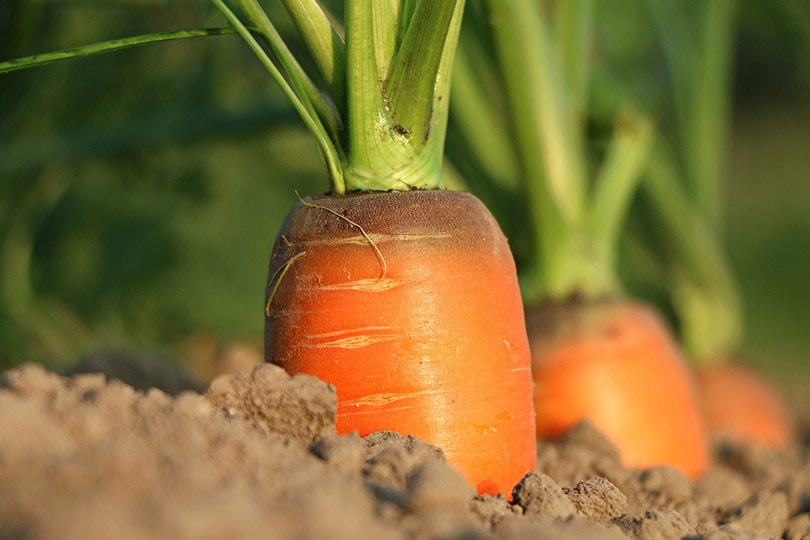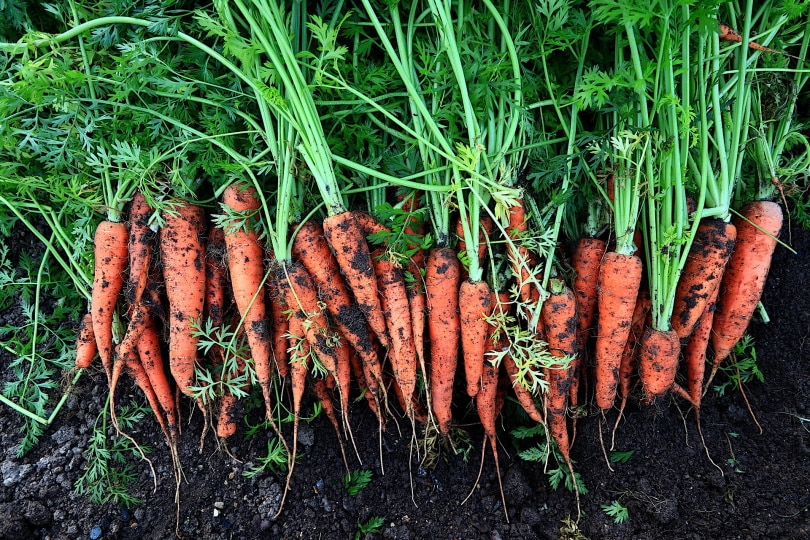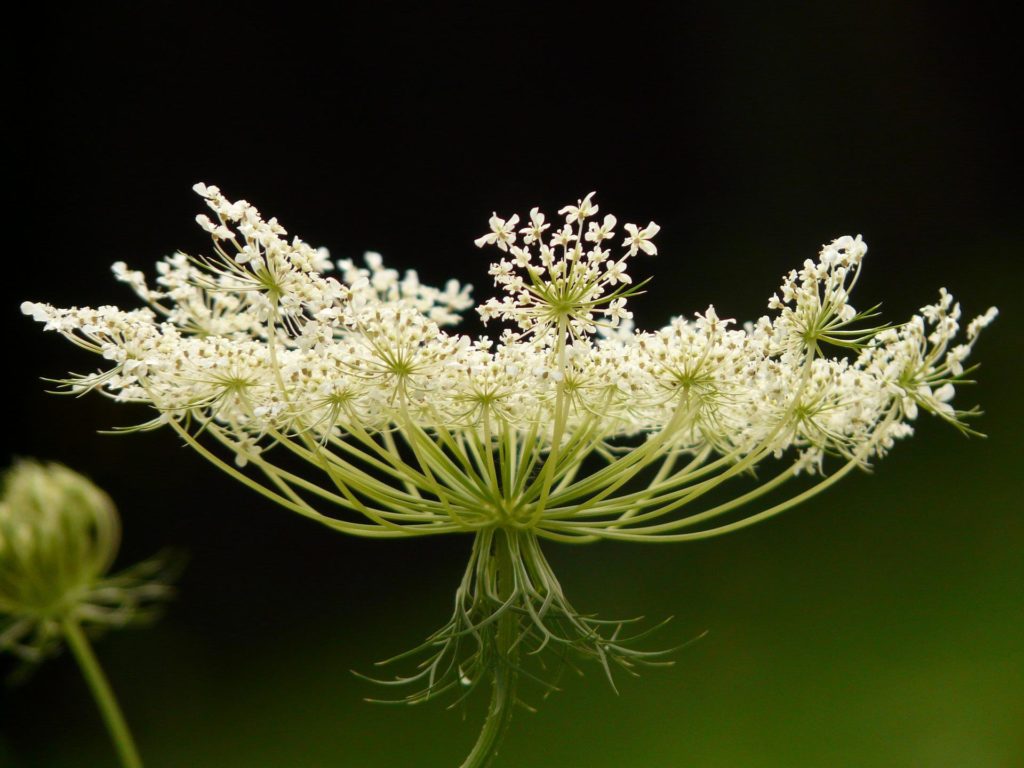How & When to Plant Carrots? (8 Simple Steps)
-
Kristin Hitchcock
- Last updated:

Carrots are not difficult vegetables to grow. They are a cool-season crop that you can grow in early spring when many other plants are yet to be planted. Therefore, they may a good option for those that are looking to garden all year round.
Homegrown carrots are often sweeter than carrots at a store, making them a great option for a garden. As the carrot ages, the sugars turn into fiber but if you eat them right away, much of the sugar will remain. Plus, you can also grow a number of unique carrot varieties, which will add some interest to any meal.
With a little prep, you can grow them nearly anywhere—and some areas will need very little prep.
When to Plant Carrots
Plant carrots from seed 2–3 weeks before the last frost date. Of course, this date will depend on your local area, as frost dates differ. You want the soil to be warm and dried out, but not so warm that it will dehydrate the carrots.
Seeds will germinate at around 55–65 degrees. However, seeds will not survive past 75 degrees. Therefore, you want the temperature within this area. Higher temperatures will make the carrots bitter, stunt growth, or simply not survive.
You can also plant carrots in the fall in some areas. You’ll want to plant them about 10 weeks before your first fall frost in this case.

The 8 Steps on How to Plant Carrots
1. Prepare the Soil
To begin, till the soil down about 10 inches. You’ll need to remove all rocks and stones, as these can prevent carrot growth. Add compost during this process if you need to. You’ll need your soils to be light and airy as well. Mix in some sandy topsoil if you need to remedy this in your area.
Double-digging is highly recommended. While this is not necessarily required, it does help to be extra sure.
2. Sow the Seeds

Sow the seeds directly into the garden. Transplanting can be done, but it’s challenging and not worth it. Instead, simply sow seeds ¼ inch deep and about 2–3 inches apart. Rows should be at least 1 foot apart. Carrot seeds are very tiny, so over-sowing them is easy. You want to ensure that the carrots do not grow together by providing plenty of room.
Many people recommend mixing the seeds and sand to prevent this problem. However, as long as you’re counting the seeds and paying attention, you can sow carrot seeds without any pre-mixing.
If you want to continuously harvest carrots throughout the growing season, plant them every 4 weeks up to mid-summer.
3. Add Fine Sand or Compost
Carrots cannot germinate if the top of the soil forms a hard crust. To combat this, we recommend keeping the soil quite wet and adding a layer of fine sand or compost. You want the soil to be moist when you put your fingers in the ground, but not soaking wet.
Carrots take a while to germinate. Therefore, patience is required. Some carrots won’t germinate for nearly a month. If your seeds don’t sprout right away, don’t worry.
Many people plant radishes or other fast-growing veggie between carrot rows. These plants help protect the soil, but they will be ready to harvest by the time the carrots sprout.
4. Thin Out the Carrots

Once the carrot plants have grown three or four true leaves and are about an inch tall, you’ll need to thin them. Thin enough carrot plants that they stand 3–4 inches apart from each other. Do not pull the plant out, as it can cause damage to the other plants.
Instead, snip the top of the plants with a pair of scissors. They should not grow back.
5. Ensure Proper Watering
Carrots need enough water throughout the growing season. Typically, they need about an inch a week. If you get an inch or more from rain, there is no need to water them. However, you may need to water if your local amount drops below that.
Do not overwater carrots, as this can cause all sorts of problems.
6. Weed Well
Carrots do not like competing against weeds. Therefore, you’ll need to weed carrots diligently. However, be extremely careful when weeding so that you do not damage the carrot’s roots. In some cases, you may simply want to snip the weeds to the surface (though some of them will simply regrow).
7. Fertilize Them Well
You’ll need to fertilize carrots about 5–6 weeks after you plant them. We recommend a low-nitrogen fertilizer. Excessive nitrogen can cause weed growth without really promoting carrot growth. Therefore, there is little reason to feed your carrots with more nitrogen. They simply don’t need it.
- Related Read: Do You Need to Peel Carrots Before Juicing?
8. Harvest
Carrots taste better when they are still small. Therefore, you should harvest carrots when they are about as wide as your thumb, which is about ½ an inch in diameter. Younger carrots come up quite easily, so that is when you want to harvest them. Simply grasp the base of the foliage and turn the plant. If you have problems, push down on the base of the root first and twist as you pull up.
If the roots are older, you may need to ease them up with a fork.
You can spread out your harvest without much difficulty usually. Different plants will usually reach full size at different times, so don’t plan on harvesting all of your carrots at once.
Be sure to harvest them before the temperature gets too hot, though. Heat can turn carrots very fibrous, which makes them difficult to eat.
When harvesting fall carrots, wait until after a frost or two. Frosting encourages carrots to store sugar, which will make them taste better. You will need to cover the tops of the carrots to protect them from the frost, however.
If you don’t harvest your carrots, they will flower in the following year. Carrots spend their first year growing and their second-year releasing seeds. Therefore, don’t count on any seeds from first-year plants.
- Related Read: 5 Best Juicers for Carrots Guide & Reviews
 Conclusion
Conclusion
Planting carrots is not hard or all that different from planting other root plants. However, they do need a lot of work on the front-end. Preferably, you should double-dig the area you’re planting the carrots down to about 10 inches. As you’d imagine, this takes quite a while.
Therefore, plan plenty of time to properly plant carrots. Luckily, this work is to be done early in the spring when it is still cool. Weeding and watering are also vital, but you should steer clear of nitrogen-rich fertilizers, as these will promote weed growth but not do much for your carrots.
In the end, as long as you have some basic knowledge, growing carrots is pretty easy. The hardest part is all the digging beforehand!
Featured Image Credit: klimkin, Pixabay
Contents


